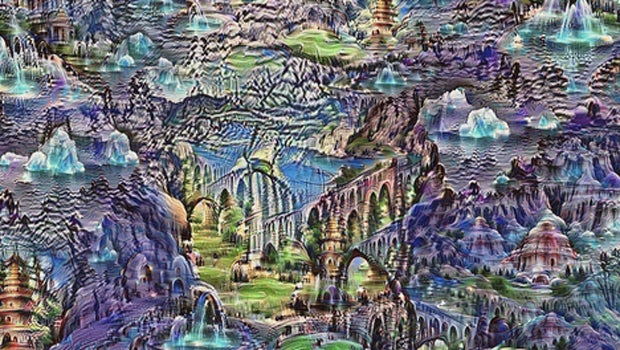Google’s DeepDream robots turn your photos into psychedelic scenes

Google has unleashed its DeepDream image recognition software on the public, allowing anyone to view their photos as seen by its artificial neural network.
The ANN software had been programmed to recognise patterns in order to categories images into faces, items and landscapes, which has led to Google making great advances in facial and image recognition in recent years.
However, in this interpretation Google has effectively turned DeepDream on itself by teaching it to over-analyse the patterns within images. In this experiment, the software then applies those patterns to edit the entire image. The result has been some pretty trippy art.
Plants have been turned in to dogs with rainbow-style swirls, while cities and towns are being added to landscapes and cloud shots.
DeepDream has now been released on the code-sharing site GitHub, allowing the public to download it and run their own photos through it.
Google says the experiment could shed a little light on human creativity.
“Two weeks ago we blogged about a visualization tool designed to help us understand how neural networks work and what each layer has learned,” wrote Google on its research blog.
“
“It also makes us wonder whether neural networks could become a tool for
artists—a new way to remix visual concepts—or perhaps even shed a
little light on the roots of the creative process in general.”
You can check out the results of the experiment on Google’s research blog or download the software yourself from GitHub.


